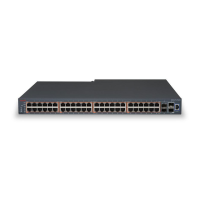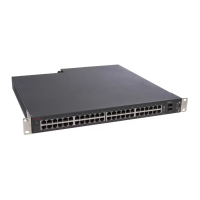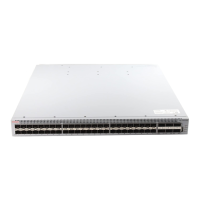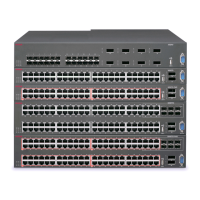Avaya C360 Layer 3 Features
166 Installation and Configuration Guide Avaya C360 Multilayer Stackable Switches, version 4.5
What is Routing?
Routing enables transfer of a data packet from source to destination using a device called a
router. Routing involves two basic activities:
● determining optimal routing paths
● transmitting information packets through an internetwork
Routers use routing tables to determine the routes to particular network destinations and, in
some cases, metrics associated with those routes. Routers communicate with one another and
maintain their routing tables through the transmission of a variety of messages.
The Routing Update Message is one such message. Routing Updates generally consist of all or
a portion of a routing table. By analyzing Routing Updates from all routers, a router can build a
detailed picture of network topology.
A Link-State Advertisement is another example of a message sent between routers. Link-State
Advertisements inform other routers of the state of the sender's links. Link information can also
be used to build a complete picture of the network's topology. Once the network topology is
understood, routers can determine optimal routes to network destinations.
Routers can route only those messages that are transmitted in a routable protocol, such as IP
or IPX. Messages in non-routable protocols, such as NetBIOS and LAT, cannot be routed, but
they can be transferred from LAN to LAN via a bridge.
When a router receives a packet, it examines the packet's destination protocol address. The
router then determines whether it knows how to forward the packet to the next hop. If the router
does not know how to forward the packet, it typically drops the packet unless a default gateway
is defined. If the router knows how to forward the packet, it changes the packet destination's
physical address to that of the next hop and transmits the packet.
The next hop may or may not be the ultimate destination host. If not, the next hop is usually
another router, which executes the same switching decision process. As the packet moves
through the internetwork, its physical address changes but its protocol address remains
constant. This process is illustrated in the figure below.

